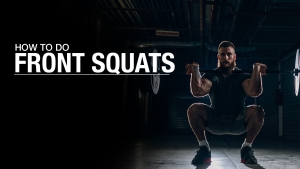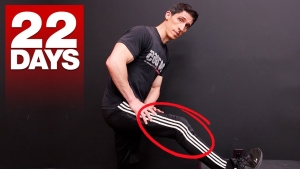
WHAT IS THE CAUSE of ANTERIOR PELVIC TILT?
Let’s face it. Nowadays we spend a lot of time on our asses!
Most of us spend the majority of our day sitting: driving to and from work, sitting most of the day at work, or watching TV at home.
And you hear it all the time…
All this sitting on a regular basis is screwing up our health and our bodies. In fact, everyday movements (or lack thereof) are what have the greatest effect on our health.
But, maybe you didn’t realize that this constant sitting is creating ONE major posture problem that in turn causes weakness and muscle imbalance throughout almost the entire body! Some areas end up with weak underactive muscles while other areas end up with tight overactive muscles.
That posture problem is called Anterior Pelvic Tilt, and it can cause pain, weakness in specific muscle groups and tightness.
And if you train and you’ve got Anterior Pelvic Tilt, it’s guaranteed your lifts will suffer…
The good news is, there are some easy and effective exercises to fix Anterior Pelvic Tilt that don’t take up much time in your day.
You’ll be amazed how quickly you start seeing the benefits of this exercise program!
So let’s take a look at exactly what Anterior Pelvic Tilt is, the domino effect it has on the rest of your body, and most importantly, the simple step by step plan you can use to correct it!
WHAT IS ANTERIOR PELVIC TILT?
Anterior Pelvic Tilt is the forward and downward tilting of the pelvis, and one of its major causes is prolonged sitting due to driving, working or inactivity.
This constant sitting with poor posture causes tightness and weakness in certain muscles which then pulls the spine out of its natural curve and the pelvis forward into this tilted position.
It’s an extremely common problem, and I’m going to use Jesse to demonstrate it because he does have a fairly significant Anterior Pelvic Tilt.
Here’s an example of what this anterior pelvic tilt position looks like. You can see the really exaggerated arch in Jesse’s back and the butt sticking out.

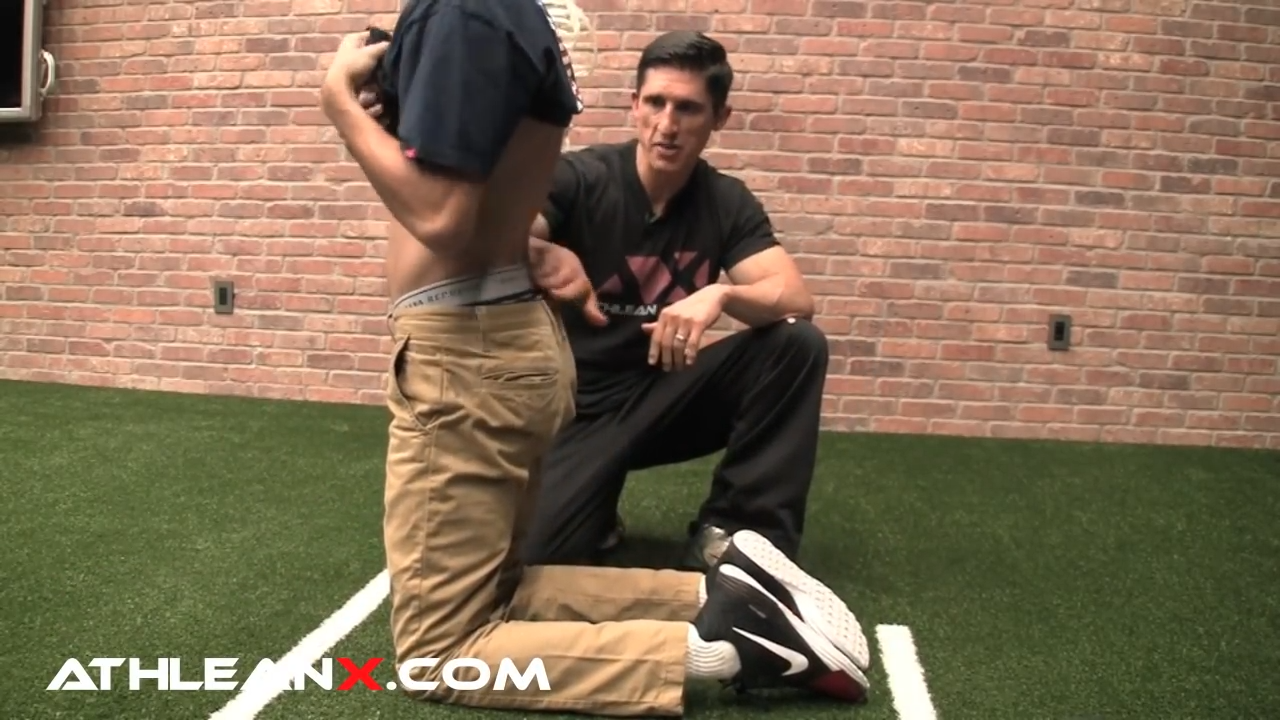
This exaggerated arch is caused by a few different muscle imbalances and weaknesses. Let’s take a look at them one by one.
First, constant sitting creates a dominance and a short, tight hip flexor, or iliopsoas, on the front of the body. This creates a pelvic tilting downward into anterior tilt.
This causes a resulting weakness in the muscles on the opposite side of the joint: the gluteus maximus and hamstring muscles.

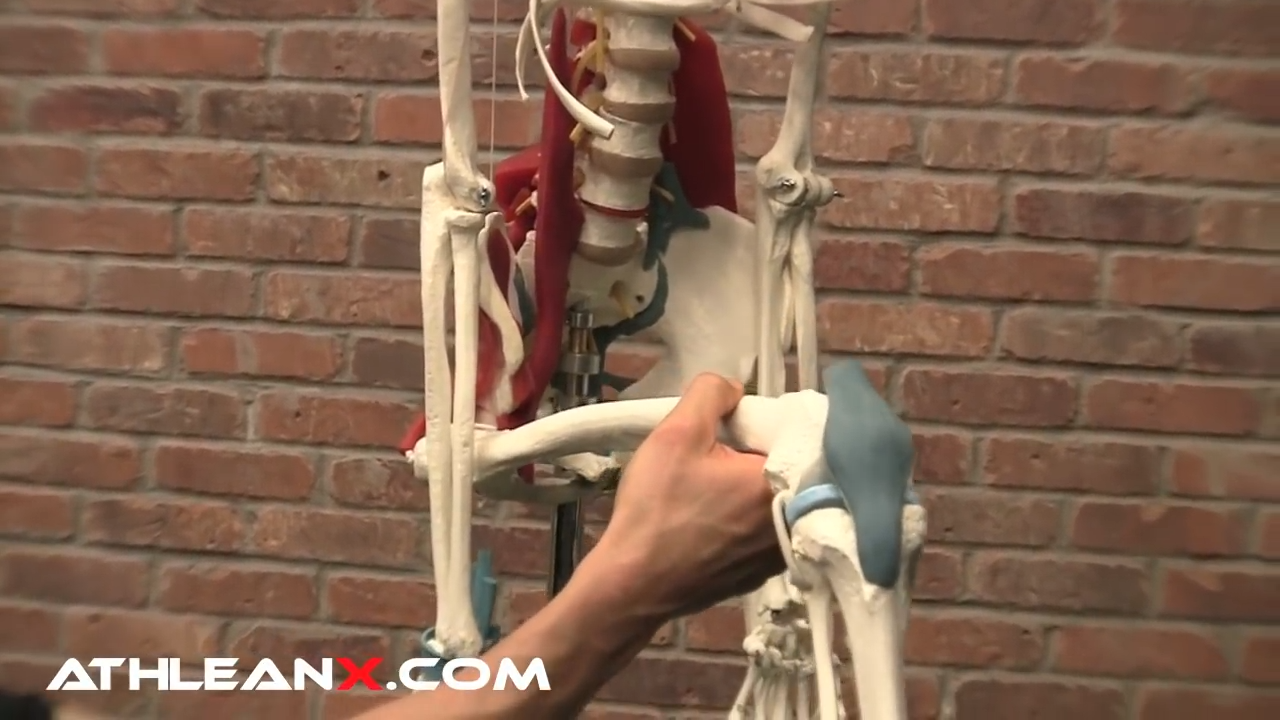
Second, the lumbar spine is forced to extend and arch away from its neutral position as it compensates to allow us to be upright. Regular sitting also typically causes weak stretched out gluteus muscles that exacerbate this same problem.
Those weak buttocks muscles aren’t doing their job to help keep our pelvis and spine in proper alignment. Ultimately this can cause the lumbar spine to overwork, creating tightness, lower back pain and eventually more serious back issues.

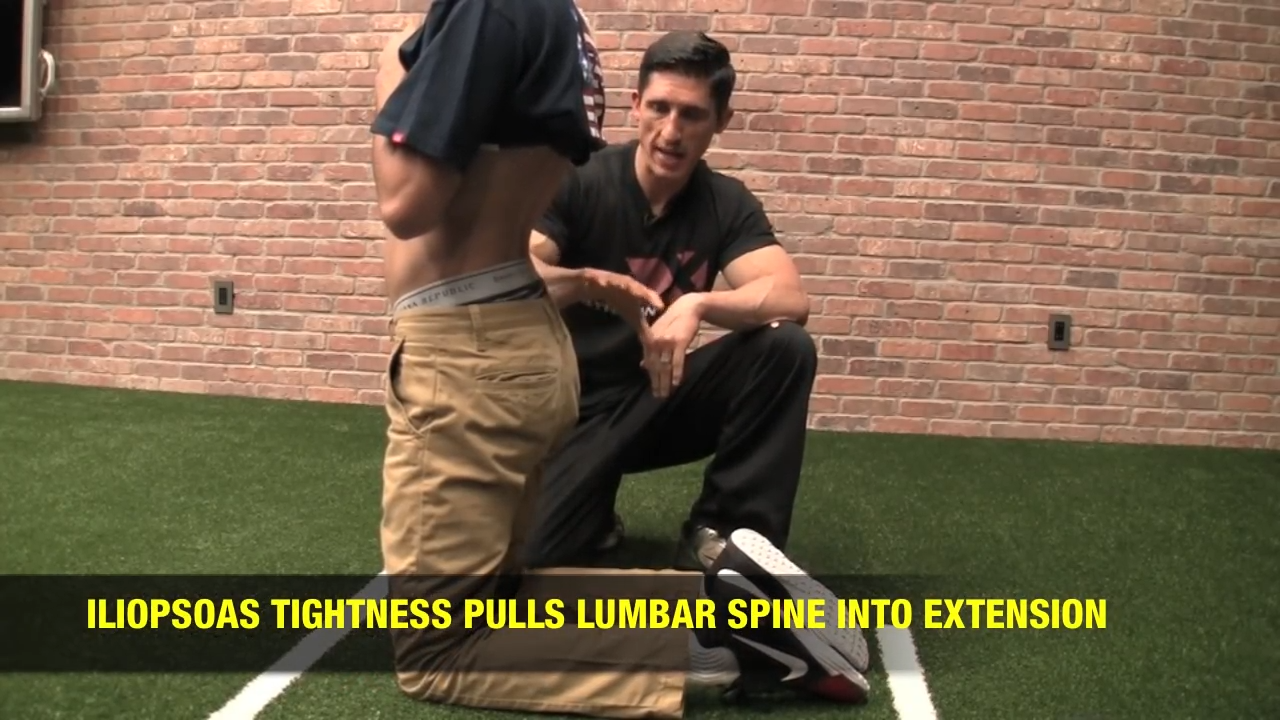
Then, to make matters worse, the exaggerated curvature in the lower back often causes a protrusion of the stomach, especially when the core muscle aren’t strong enough to counteract the downward pull of the pelvis.
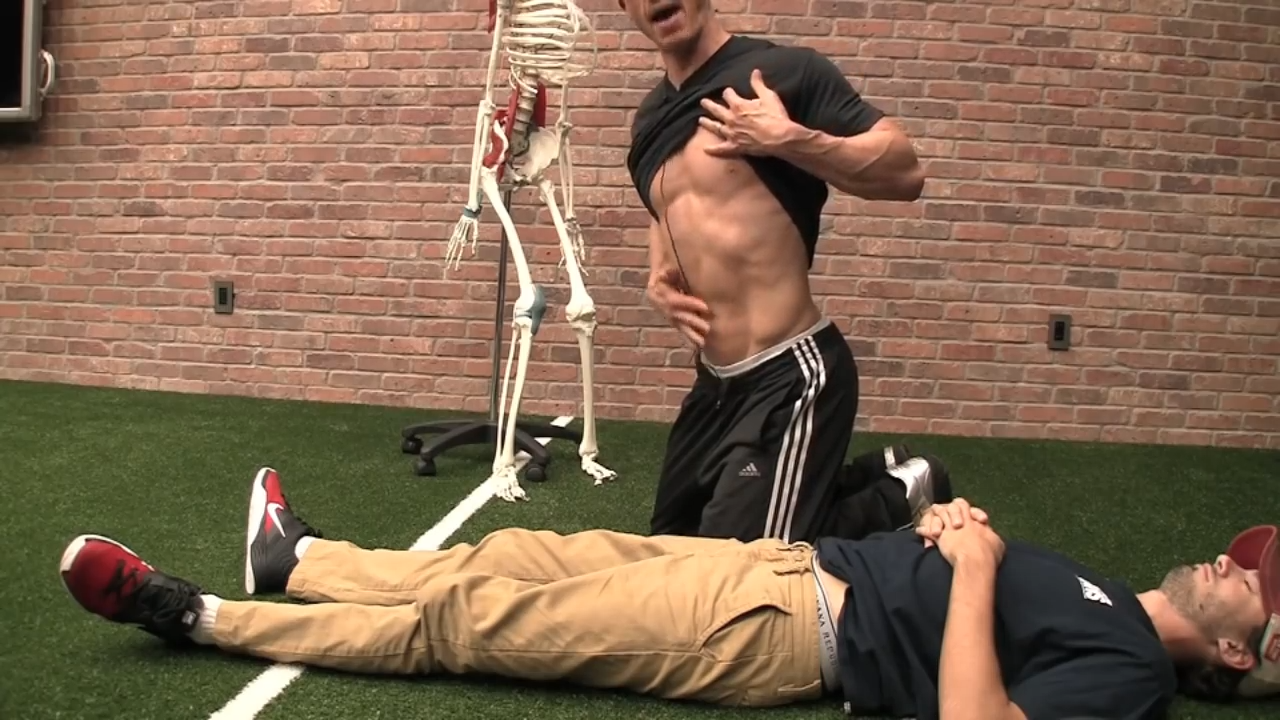
Let’s briefly recap this cascade of issues caused:
- Excessive sitting makes the hip flexors too shortened and tight, which pulls the pelvis into anterior tilt, and causes weakness in the gluteus muscles and hamstrings.
- The lumbar spine has to overcompensate for that position of the pelvis, so it tends to form an exaggerated arch away from its natural curve and begin to overwork.
- Constant sitting with the buttocks muscles in a stretched out position makes them weak, which only contributes further to cause lumbar spine issues.
- The stomach protrudes because the exaggerated curve in the spine, and often the ab muscles just aren’t strong enough to counteract the downward inclination of the pelvis.
So, we can see how sitting too much can cause Anterior Pelvic Tilt, which then reverberates throughout your joints and muscles. Now let’s talk about how to correct Anterior Pelvic Tilt and restore proper posture of the spine and pelvis.
HOW TO FIX ANTERIOR PELVIC TILT
There is a domino effect that causes Anterior Pelvic Tilt starting with tight hip flexors, tight hamstring muscles and weak gluteus, muscles and ending with an arched lumbar spine which creates the perfect storm for injury.
So, what can we do to fix it? And what should we be avoiding? Let’s take a look at some of my best tips, and some stretching and strengthening exercises to fix this issue.
1.) DON’T STRETCH YOUR HAMSTRINGS
First, let me tell you what NOT to do.
DON’T stretch out your hamstrings even if you feel you have tight muscles. While it’s normal to instinctively try to stretch whatever muscles are tight, this would be a mistake here. People with Anterior Pelvic Tilt have their pelvis inclined so far forward that the hamstrings are already in a ‘stretched’ position and don’t have anywhere else to go.

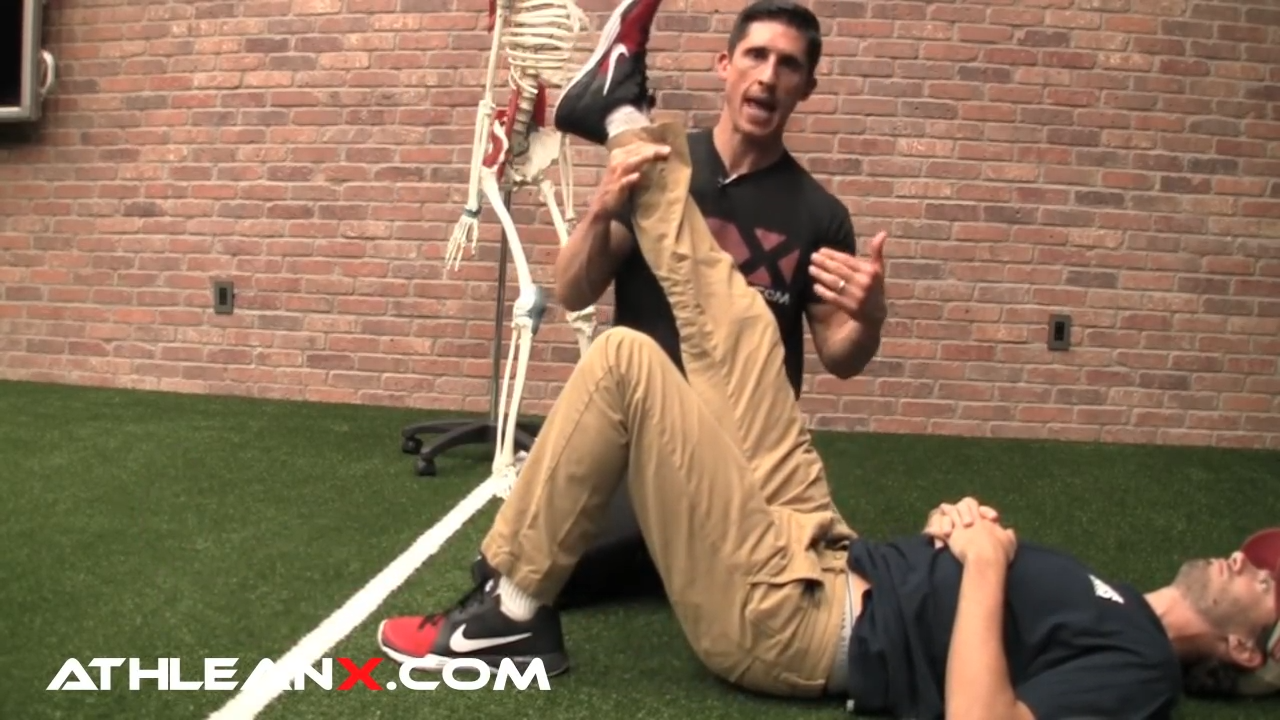
If you have anterior tilt and you keep stretching out the hamstrings, you could actually make your problem worse.
2.) STRENGTHEN THE HAMSTRINGS AND GLUTES AND STRETCH THE HIP FLEXORS
Instead of stretching out the hamstrings what we really want to do is strengthen the leg muscles in the back of the leg, and we need to strengthen those weak buttock muscles, too.
This is because with Anterior Pelvic Tilt, you’re also dealing with weak inactive gluteus muscles that are causing the low back to do all the work.
And what we DO want to stretch is the hip flexors, which are short and tight from constantly sitting.
This Modified Sprinter Lunge accomplishes all three of these goals in a single movement. As you can see, when you come down into the lunge, you’re pre-stretching and loading the gluteus muscles, getting them ready to work by stepping forward. You’re also getting some great activation in the hamstring by getting down into the sprinter lunge position. Make sure you are squeezing the buttock muscles in this movement.

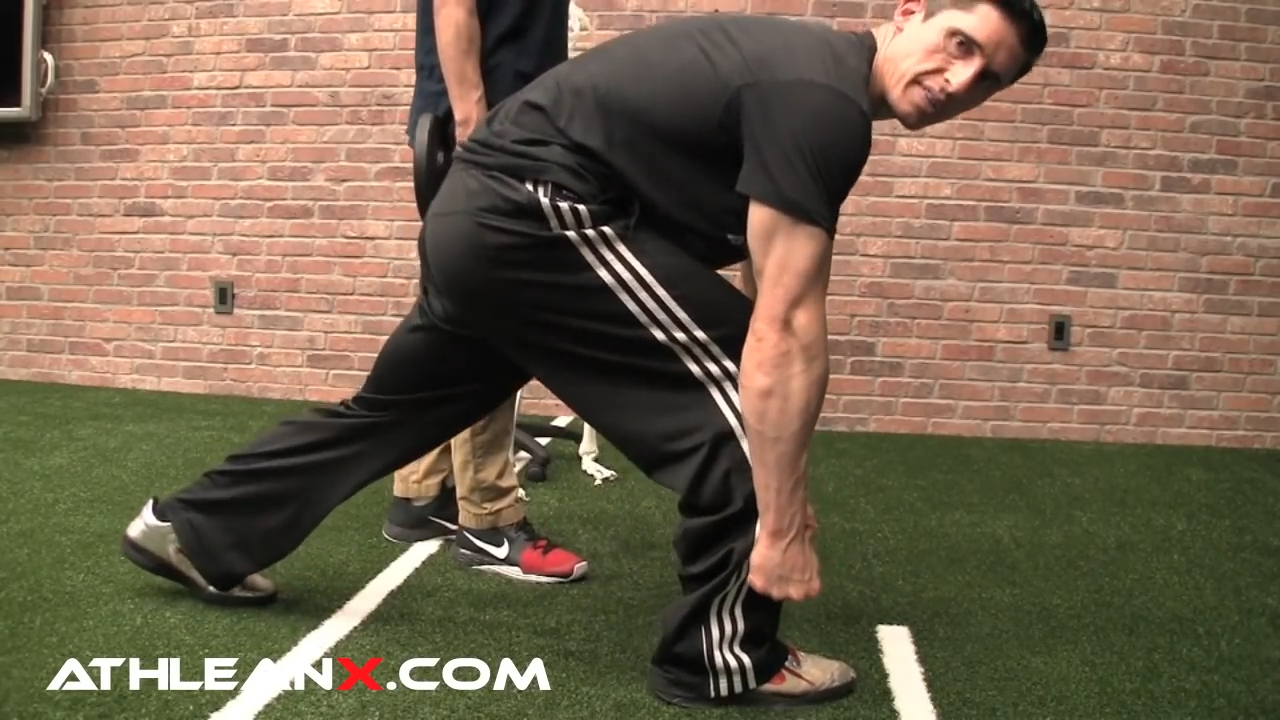
But look what’s happening on this back leg. We’re actually getting a stretch of the left hip flexor at the same time that we’re loading up this right gluteus muscles and hamstring.

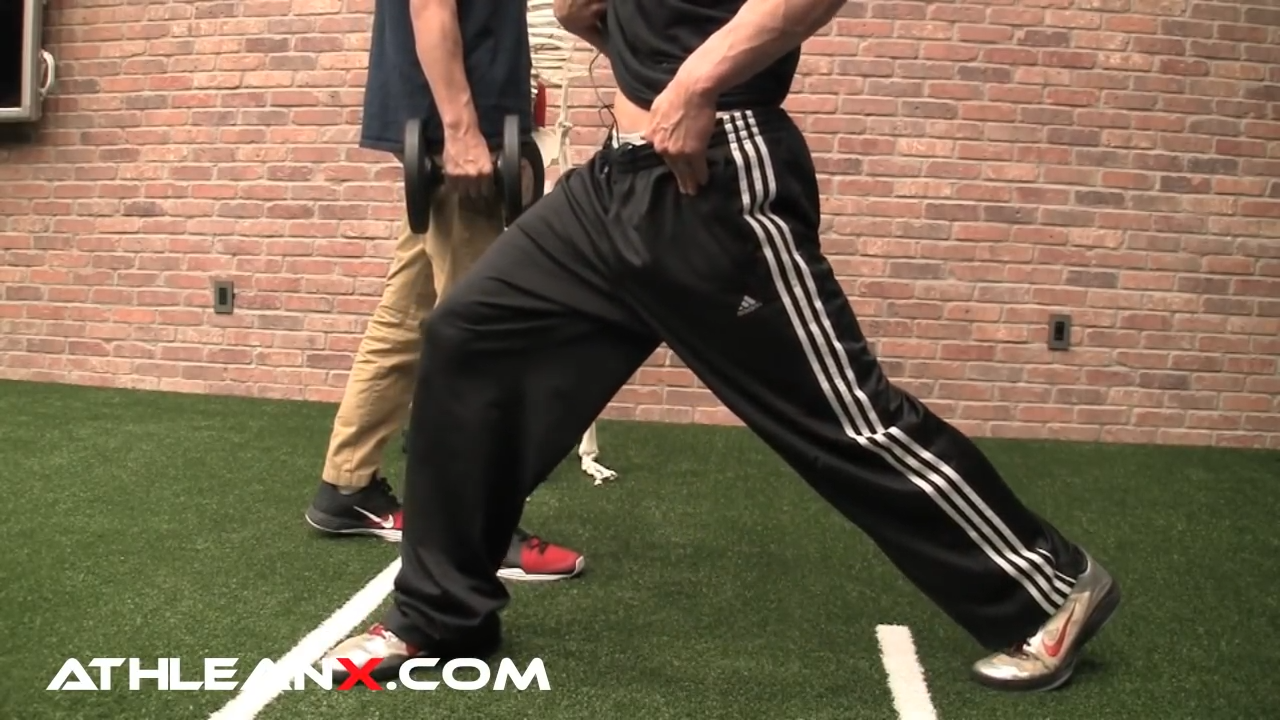
With this one exercise we’re actually killing multiple birds with one stone. You are getting some great hip flexor stretches as you activate your buttock muscles in this position.
3.) STRETCH OUT THE LOW BACK
If you feel like you have a tight low back as a result of your Anterior Pelvic Tilt, it’s a good idea to stretch it daily. You can choose a low back stretch that you feel works best for you.
One of my favorites that I use frequently after a deadlift is a bar hang, which is awesome for decompressing the lumbar spine. Another good stretch is Child’s Pose which is great for increasing lumbar paraspinal length. Regardless of which stretch you choose, hold this position for as long as you can to get a nice deep stretch.
I also like to do a roll back stretch, trying to reach your toes behind your head. Start with your upper body lying flat on the ground and tilt your pelvis to bring your glutes off the floor and feet over your head, touching the floor if you’re able. However, you do need to be careful to maintain a neutral neck position with this movement. If you feel any pain in the neck, just skip this one.
4.) STRENGTHEN THE ABS
Because of the protrusion of the belly in this arched-back position, you’re also getting some weakness in the abs because they can’t contract properly in this overly stretched position. It’s important to strengthen the abdominal muscles using core-strengthening exercise to counteract this.
For abs, check out my Perfect Abs Workout or My Exact 6 Minute Abs Routine.
The main thing you want to make sure of is not to use hip flexor dominant ab movements, because for people with Anterior Pelvic Tilt, the hip flexor is already too tight and wants to take over and do all the work. You also want to make sure you’re strengthening the deeper muscles of the abs to build up core strength.
It’s easy to see how spending a lot of time sitting causes weakness and tightness that create a domino effect of imbalances throughout the body. The good news is that if you do just the few corrective exercises and stretches I’ve shown you daily, you can counteract Anterior Pelvic Tilt and avoid pain and injury.
Far too often, poorly designed workout programs are leaving their users with ridiculous imbalances that set them up for injuries and breakdown. Start repairing your joints from the inside out by following a program created by a physical therapist who is trusted by today’s top professional athletes. You can get this in our ATHLEAN-X programs!

- Anterior Pelvic Tilt is caused by excessive sitting which causes tight hip flexors that pull the pelvis forward and out of neutral alignment, and cause weakness in the gluteus muscles and hamstrings on the opposite side of the joint. These faulty everyday movement patterns can affect your strength and health in a big way.
- This forward pull of the pelvis away from its neutral position also causes the lumbar spine to arch and overwork. Chronically weak glutes don’t have the muscle strength to counteract the downward pull of the pelvis.
- Anterior tilt of the pelvis also causes a protrusion of the belly and weak stretched out abdominal muscles don’t lack the necessary strength to support the spine and pelvis.
- To counteract Anterior Pelvic Tilt, you want to avoid stretching the hamstrings, and strengthen the hams and glutes instead. You also need to incorporate effective core exercise to strengthen the abs. Finally, you need to stretch that tight hip flexor and stretch out the low back if it’s tight.
- I’ve given you some of the best pelvic tilt exercises to help fix this common issue. The modified Sprinter Lunge exercise I’ve shown you is an excellent tool for strengthening hams and glutes, and stretching out the opposite hip flexor. I’ve also provided a few suggestions for low back stretches and building strong abs.

Jeff Cavaliere M.S.P.T, CSCS
Jeff Cavaliere is a Physical Therapist, Strength Coach and creator of the ATHLEAN-X Training Programs and ATHLEAN-Rx Supplements. He has a Masters in Physical Therapy (MSPT) and has worked as Head Physical Therapist for the New York Mets, as well as training many elite professional athletes in Major League Baseball, NFL, MMA and professional wrestling. His programs produce “next level” achievements in muscle size, strength and performance for professional athletes and anyone looking to build a muscular athletic physique.
































